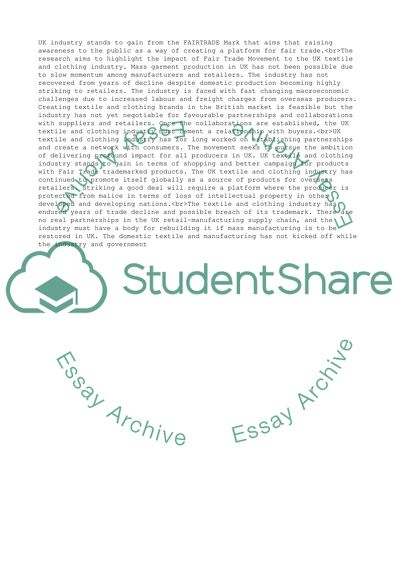Cite this document
(How has the fair trade movement impacted the UK clothing and textile Essay, n.d.)
How has the fair trade movement impacted the UK clothing and textile Essay. https://studentshare.org/macro-microeconomics/1879154-how-has-the-fair-trade-movement-impacted-the-uk-clothing-and-textile-industry
How has the fair trade movement impacted the UK clothing and textile Essay. https://studentshare.org/macro-microeconomics/1879154-how-has-the-fair-trade-movement-impacted-the-uk-clothing-and-textile-industry
(How Has the Fair Trade Movement Impacted the UK Clothing and Textile Essay)
How Has the Fair Trade Movement Impacted the UK Clothing and Textile Essay. https://studentshare.org/macro-microeconomics/1879154-how-has-the-fair-trade-movement-impacted-the-uk-clothing-and-textile-industry.
How Has the Fair Trade Movement Impacted the UK Clothing and Textile Essay. https://studentshare.org/macro-microeconomics/1879154-how-has-the-fair-trade-movement-impacted-the-uk-clothing-and-textile-industry.
“How Has the Fair Trade Movement Impacted the UK Clothing and Textile Essay”. https://studentshare.org/macro-microeconomics/1879154-how-has-the-fair-trade-movement-impacted-the-uk-clothing-and-textile-industry.


